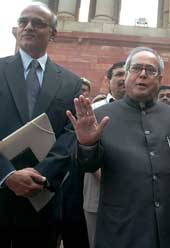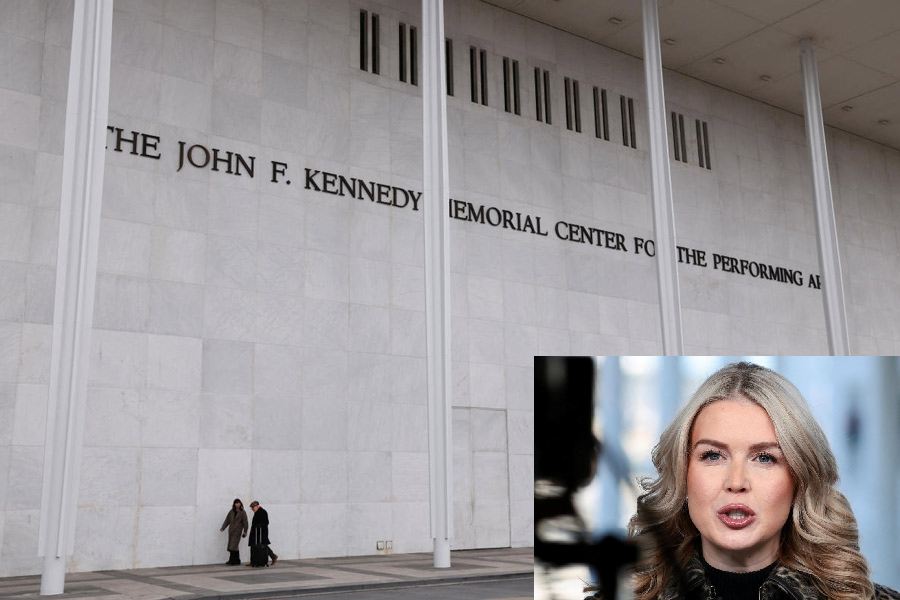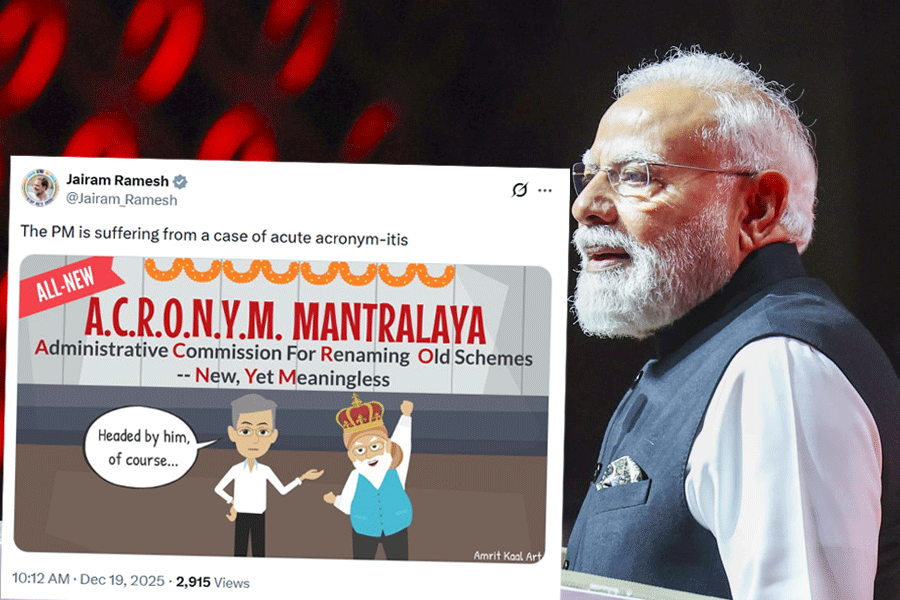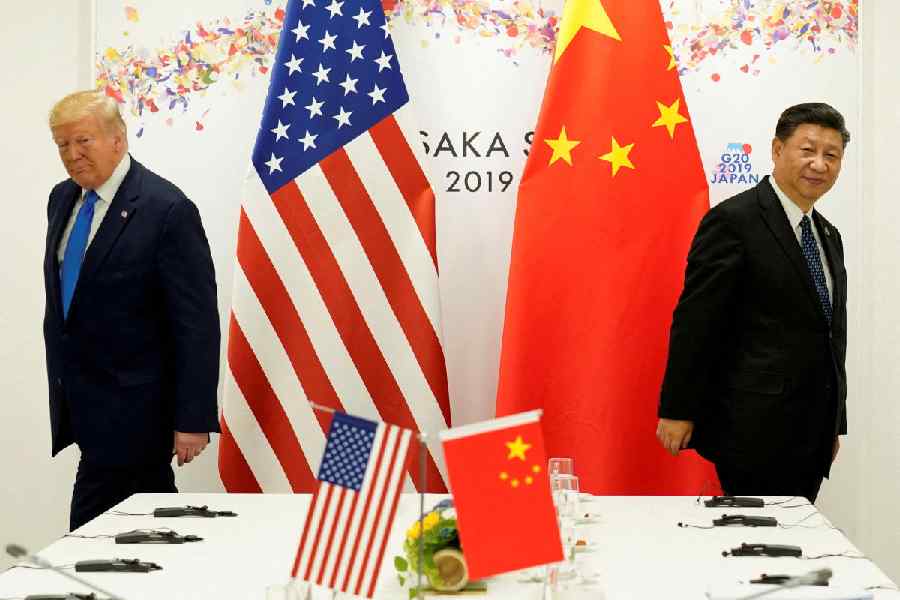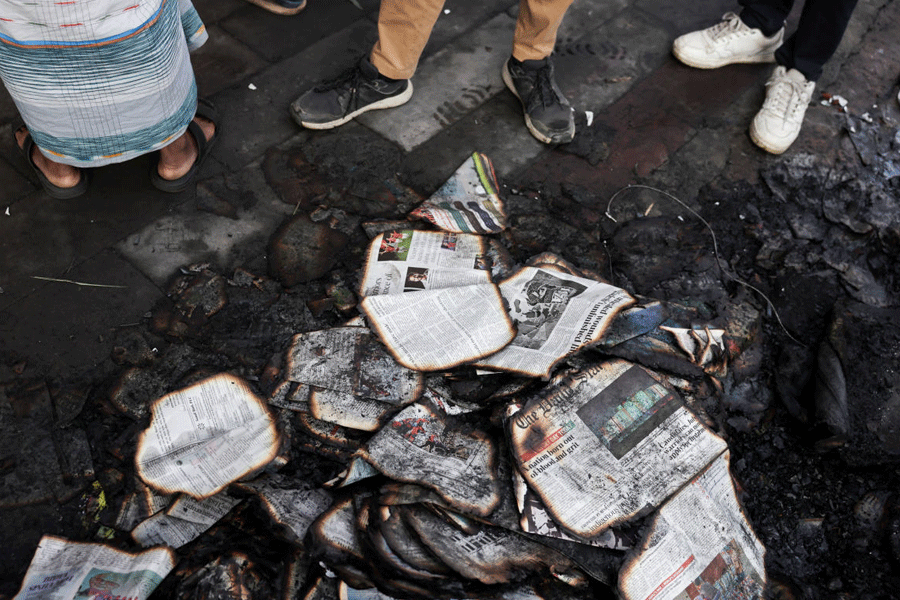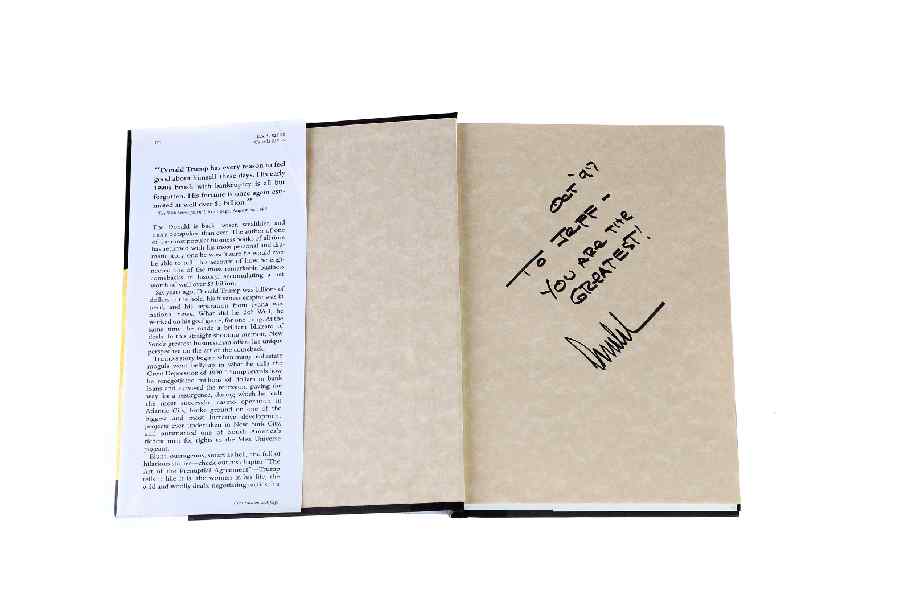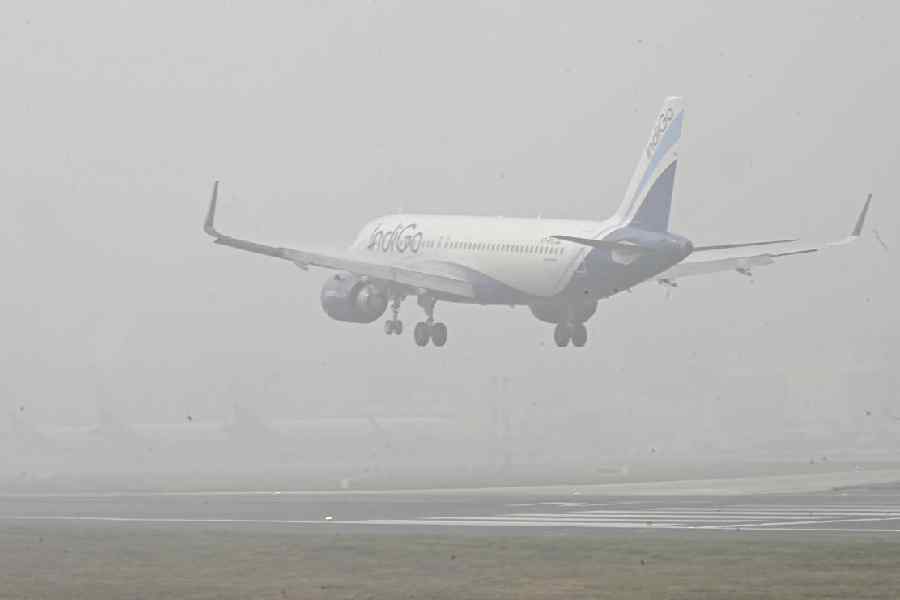|
|
| Shekhawat with Jyoti Basu: with a little help |
Electing the president, like most things in Indian politics, is anything but simple. The president is supposed to be an apolitical, figurative head of the state. Shouldn’t the election to such a post be transparent, preferably through consensus and based on the simple principle of picking the best and the brightest?
But then, how many things happen in India as they ought to? These days, New Delhi wears the look of a political bazaar. Each presidential aspirant and his supporting party or parties are busy negotiating, cutting deals and striking the best bargain. The parties of the ruling United Progressive Alliance — in particular, the Congress, being the largest partner — are expectedly in the thick of things.
In the rest of the party headquarters too, there is frenzied action. A regional satrap has a condition: “No Brahmins”. Another whispers, “no Dalits”. A third crafty leader’s party spokesman makes some noises before supporting an aspirant. The change of heart comes after a promise that his favourite will get the governor’s post. Yet another partner wants a five-point assurance from the government in writing. It takes a while to convince them that such matters cannot be spelled out on a piece of paper.
Next, Sonia Gandhi-Manmohan Singh had to confront a vintage politician in behind-the-scene deliberations. The National Democratic Alliance sent an able negotiator to test the waters with the Congress president. After a few meetings, a direct offer was made — if the vice-president, Bhairon Singh Shekhawat, contests as independent and gets UPA approval, the NDA would back the Congress for the vice-president’s office and give an undertaking that five years later, it would back that person for Rashtrapati Bhavan.
Somewhat rattled by this direct approach, UPA managers got back with a modified proposal: they would like the ruling coalition to get the presidential office and were willing to concede the vice-president’s post to the NDA with a similar undertaking to back that person for president after five years. Needless to say, the talks broke down.
As far as realpolitik is concerned, the 2007 presidential polls are a nightmare for the ruling UPA. Consider this: a candidate has to approach 107 political parties and their leaders. An aspirant’s campaign must be a mix of careful calculation and a mega public relations exercise. The electorate consists of 4,120 MLAs, belonging to 30 legislative assemblies, apart from 776 MPs. Moreover, it is not based on a simple one-vote-for-one-elector principle. Each voter’s vote has a certain value. Each MP’s vote has a value of 708, which makes the total value of their votes 5,49,408.
When it comes to the value of the vote of an MLA, things get really complicated. The value of an MLA’s vote is calculated on the basis of the total number of assembly seats in each state divided by the total population of the state (according to the 1971 census). Therefore, one vote of an MLA from Uttar Pradesh, which has the highest population and also the largest number of MLAs (403), will carry a value of 208, whereas an MLA from Sikkim — which has 32 MLAs — has the lowest vote-value of 7. The total value of the votes of all the MLAs of UP works out to 83,824. This is almost 10 per cent of the total value of votes — which is 5,49,474 for 4,120 MLAs. And the total value of votes of the electorate, comprising both MLAs and MPs, works out to 10,98,882. So, for a candidate to get into Rashtrapati Bhavan, 5,49,441+1 votes is the minimum requirement.
And we have not even come to the task of reaching out to all the voters across the country. The NDA and the UPA have under their umbrellas only 29 parties, while as many as 78 are outside these two coalitions having a total vote-value of 33,043. Not only can these votes not be taken for granted, but these parties, in fact, play hard to get and have to be desperately wooed.
If you thought the worst was over, hold on. No party whip is applicable in the presidential polls. The election is held in accordance with the system of proportional representation by a single transferable vote in a secret ballot. Each elector can have as many preferences as there are candidates, but no ballot paper shall be considered invalid solely on the ground that all such preferences are not marked.
This provision has a crucial bearing while calculating the total value of votes polled by each candidate. The quota for declaring a candidate elected is determined by dividing the total value of valid votes by 2 and adding one to the quotient, ignoring the remainder, if any. For example, assuming the total value of valid votes polled by all candidates is 1,00,001, the quota required for getting elected is: 1,00,001/2 + 1 = 50,000.50 + 1 = 50,001 (Ignore 0.50). If no candidate makes the grade on the basis of first-preference votes, then there is a second round of counting, during which the candidate having the lowest value of votes of first preference is excluded and his votes are distributed among the remaining candidates according to the second preference marked on the ballot papers. The other continuing candidates receive the votes of the excluded candidate at the same value at which he/she received them in the first round of counting. And thus the process of exclusion continues till one of the continuing candidates gets the required quota or till only one candidate remains in the field.
In 1969, V.V. Giri won with the help of second-preference votes, the only time this happened. Today, Shekhawat and his NDA supporters are hoping it was not the last time. The NDA’s strategy is to stop the UPA nominee from winning on the basis of first-preference votes and to turn the table with second-preference votes. To achieve this, the opposition would need a large slice of votes (at least 25000) from within the UPA.
The “art of the impossible” has always dominated the selection of the president. In 1957, Jawaharlal Nehru was less than enthusiastic to give a second term to his presidential choice of 1952, Rajendra Prasad. He wanted S. Radhakrishnan to move from the vice-president’s house to Rashtrapati Bhavan, but his cabinet colleagues had a different plan. Led by Maulana Abdul Kalam Azad, the Congress parliamentary board over-ruled Nehru and got Prasad a second term. Twelve years later, when Indira Gandhi was similarly vetoed over the choice of the party’s candidate, she did not heed democratic ideals. The 1969 election were unprecedented, as the contest was between two candidates supported by the organizational and parliamentary wing of the Congress.
In 1992, the Congress-supported Shankar Dayal Sharma defeated a Christian, tribal, Janata Dal-supported G.G. Swell, triggering speculations about a “merit versus scheduled tribe” contest for the first time.
Going by the happenings of 2007, the presidential polls can only get curioser and curioser. How much politicking must one indulge in before getting to the post which will take him above all politics?

